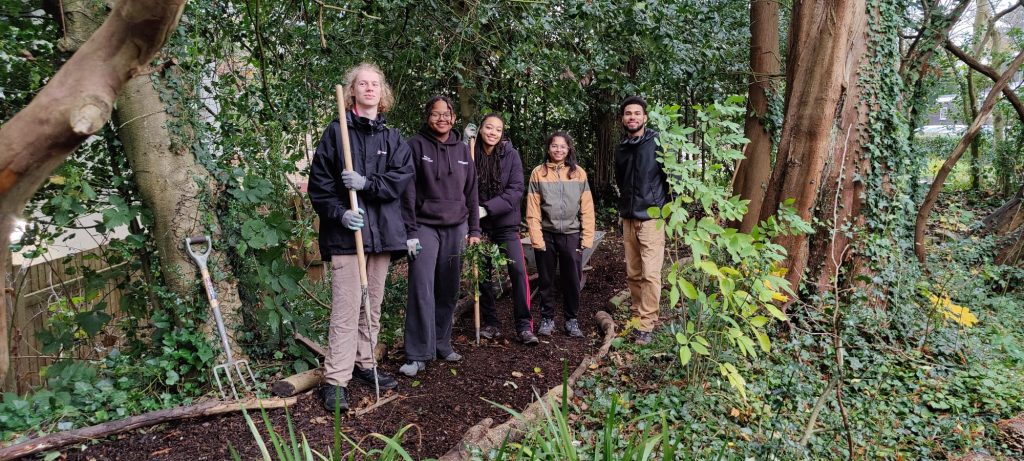
Latest News from the Firs Botanical Grounds
Blog by Megan O’Dowd, Apprentice Horticultural Technician at the Firs Botanical Grounds
You might not have heard of The Firs – a hidden gem nestled within the Fallowfield Campus. Historically Joseph Whitworth’s back garden, it now serves many purposes, including:
- housing historic plant collections
- vital environmental research projects
- community outreach
- student volunteering schemes
- green wellbeing sessions.
After long years of neglect due to understaffing, the site is undergoing exciting changes with the dream of one day becoming a Botanical Garden for Manchester. At the start of the new academic year, it seems the perfect time to reflect on developments during 2023/24. We want to say a big thank you to all the volunteers that helped to make these changes happen!
Wildlife Pond
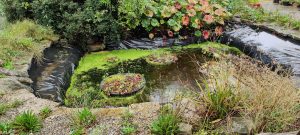
The pond before renovations, leaking with the water line far below the top.
The pond needed a lot of work to get it back to its former glory – rather unfortunately it was damaged during the last attempt to clear overgrown plants, and rips to the liner meant water was draining out and the water level was sitting much lower than it should.
With the help of the Botany Society (and a few other superstar volunteers), wildlife was rescued from the pond, water lilies and other plants rehomed temporarily, all the water drained out and the liner completely cleared of decayed matter. At this point a new liner was rolled out atop a fresh underlayer, and the glorious rains of Manchester soon filled the pond back up to the top again.
This was now the perfect opportunity to rethink the margins of the pond, in an attempt to make it more accessible to wildlife. Gravel slopes were introduced, and the rocks and slabs were put back in a much more naturalistic way, replicating a body of water that could be found in nature. Over the summer much of the wildlife returned, including newts, ducks, dragonflies, hoverflies and much more.
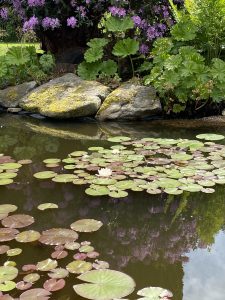
The pond after renovations, with water lilies on the surface in springtime.
Next steps: to create a planting scheme for the pond, along with the creation of a bog garden which will receive overflow water from the pond (with the added difficulty of finding an alternative to peat!).
Students can get involved with volunteering opportunities like this by getting in touch with the Botany Society, or signing up to volunteer independently at The Firs through the Volunteer Hub. The Botany Society have written a statement for anyone interested in joining.
Woodland garden
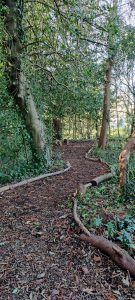
Part of the woodland walk finished and open to visitors!
This past year, the woodland garden has been made more accessible to visitors, with the re-establishment of a path, the creation of a fence to block off a dangerous drop off at the edge of the garden, and the removal of self-seeded Sycamores and Hollys that had grown so large they were competing with specimen trees.
Although now looking a little less like a woodland, removing these self-seeded trees has given the specimen trees space to grow, including a magnolia that has failed to flower for years due to shading from these weedy species.
It also allows space to potentially grow some new and exciting trees in the woodland walk, which can be beneficial for biodiversity, climate resilience and education. A whole host of bulbs were planted this year too, including English bluebells, wild garlic and muscari, which should come out in full force in spring 2025.
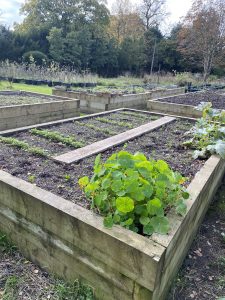
The new vegetable beds with nasturtium, radish and winter greens growing this autumn.
Vegetable beds
In a stroke of luck, The Firs was gifted 4 large beds following the demolition of the grounds around Owen’s Park. The Manchester Food Partners, a student action group at the University, utilised these vegetable beds to grow a great variety of crops, including courgettes, tomatoes, beetroots and beans.
You can read their statement which outlines their aims and ambitions for the coming year with opportunities to get involved.
The Firs welcome students, staff, and members of the community alike to get involved should they be interested, everyone is welcome!
To find out more visit the Firs website, or get in touch via firs@manchester.ac.uk. We hope to have more exciting updates soon!

0 Comments